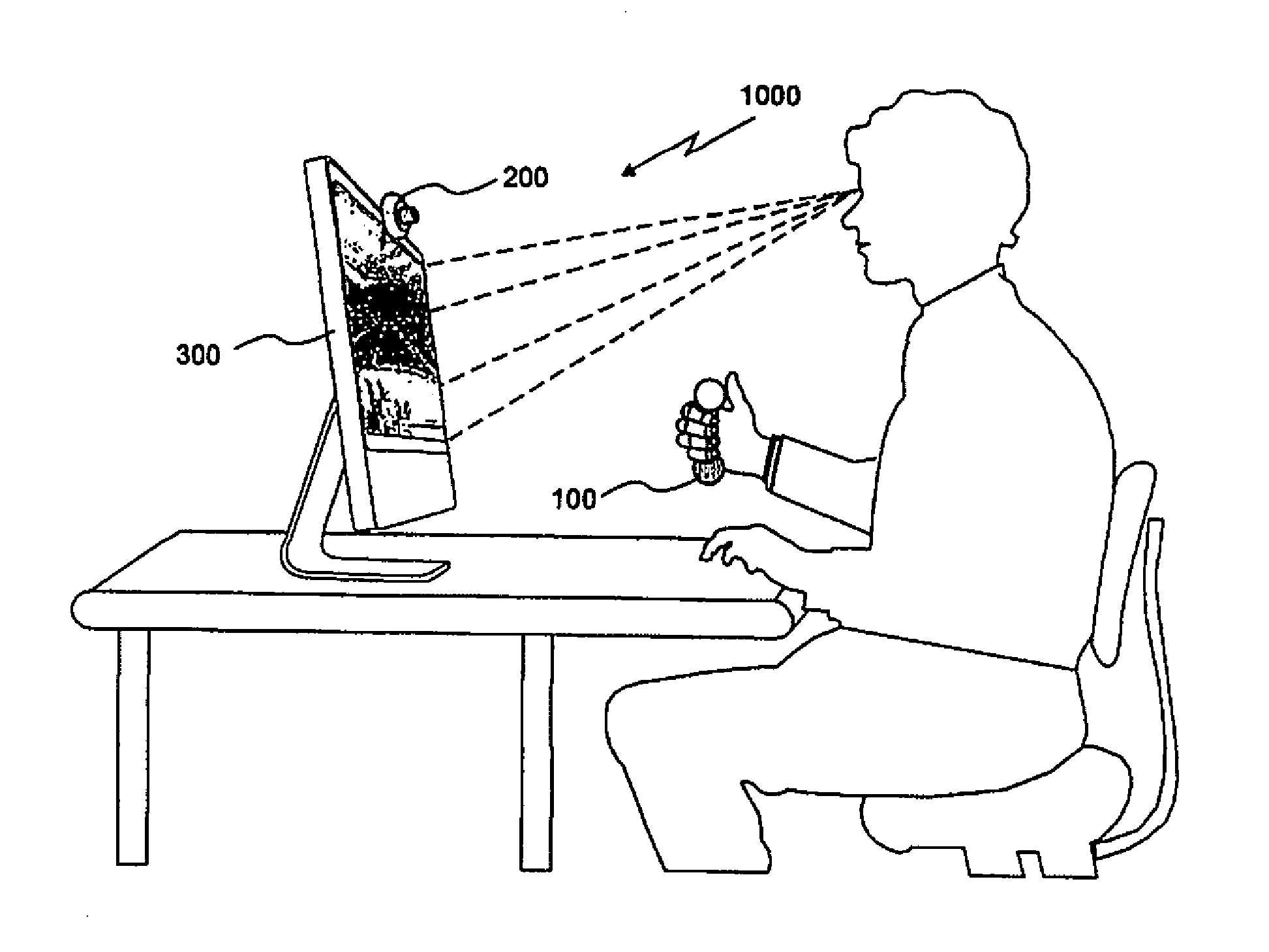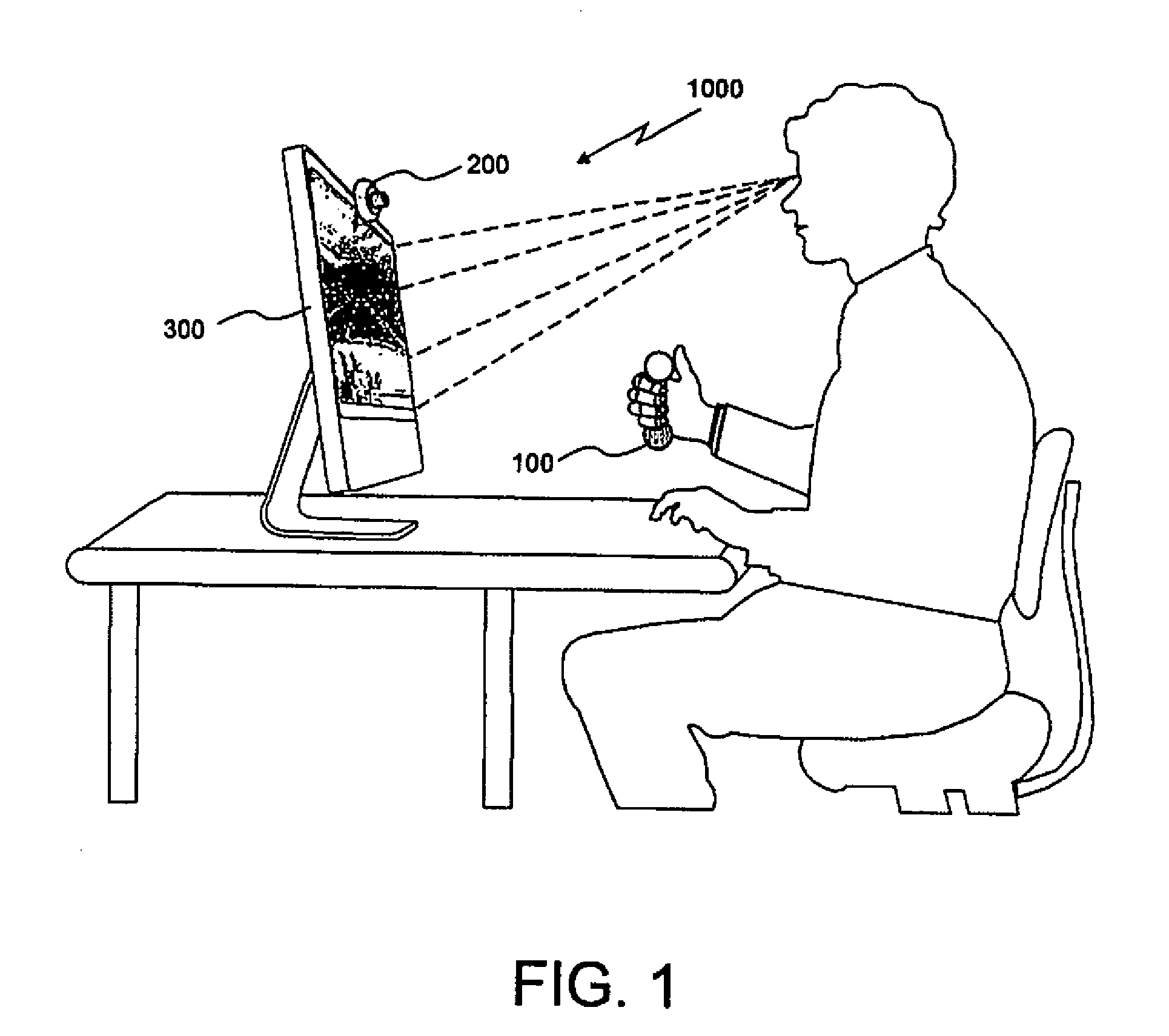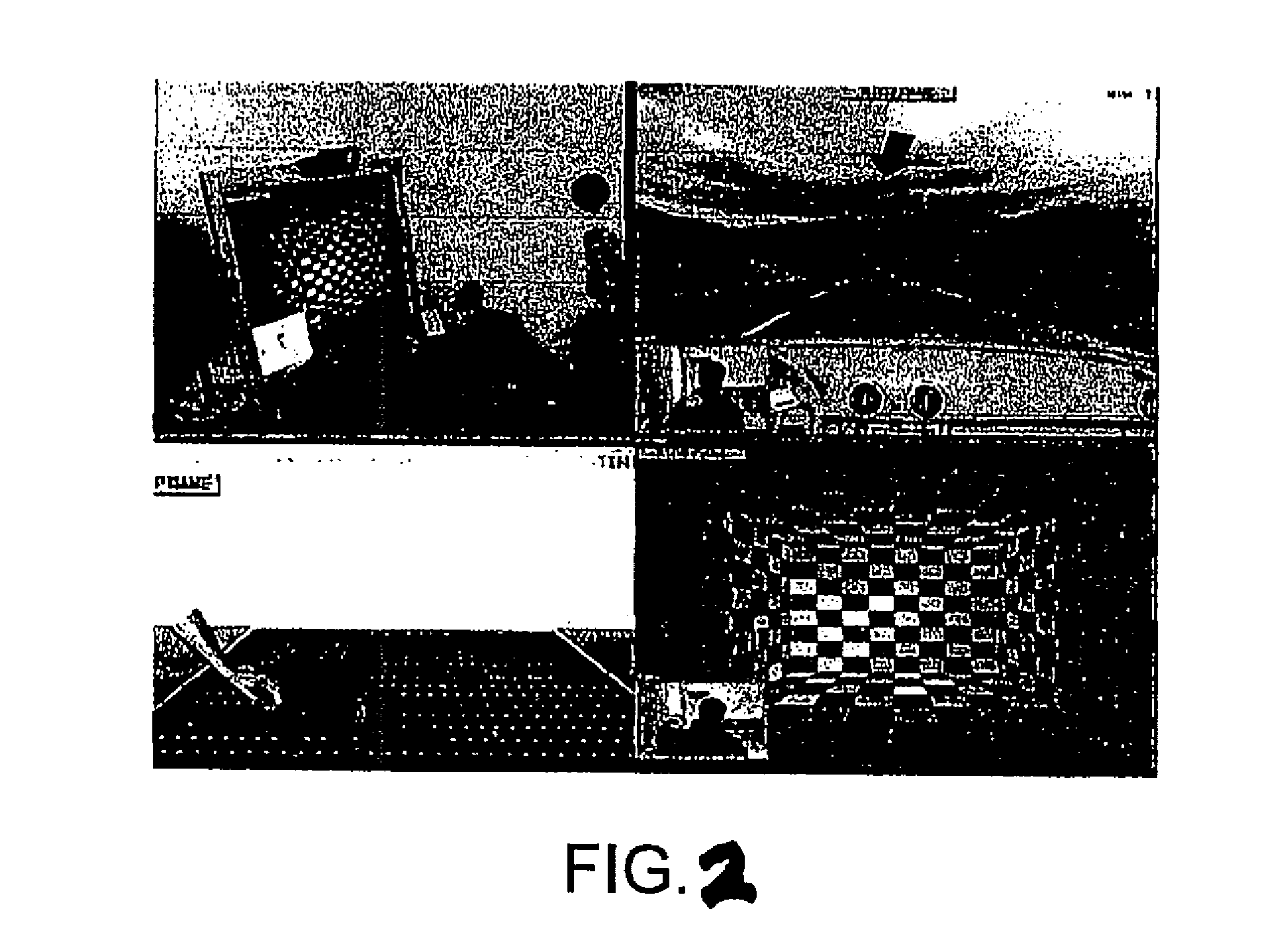3D monocular visual tracking therapy system for the rehabilitation of human upper limbs
a visual tracking and therapy system technology, applied in the field of 3d monocular visual tracking therapy system for the rehabilitation of the upper limbs, can solve the problems of patients being sent home, rehabilitation treatments are reduced, and patients losing their motor abilities, and achieves the effect of high efficiency and easy installation and operation
- Summary
- Abstract
- Description
- Claims
- Application Information
AI Technical Summary
Benefits of technology
Problems solved by technology
Method used
Image
Examples
examples
[0065]The system was used in a group of 22 patients having suffered from stroke in a hospital (Rehabilitation Unit of the Neurology and Neurosurgery Institute in Mexico City). The patients used a prototype of the system in the hospital, interacting with different games, guided by a therapist. The therapy lasted 7 weeks, with 3 sessions per week; before and after the therapy each patient was assessed by a therapist using two different clinical ranges (Fugl-Meyer index and motricity index). The results show a statistically significant improvement in both ranges after the sessions with the “Gesture Therapy” system. In addition, a motivation survey was made to all patients after having used the system, the survey results showing a much higher motivation compared to the “traditional” therapy.
PUM
 Login to View More
Login to View More Abstract
Description
Claims
Application Information
 Login to View More
Login to View More - R&D
- Intellectual Property
- Life Sciences
- Materials
- Tech Scout
- Unparalleled Data Quality
- Higher Quality Content
- 60% Fewer Hallucinations
Browse by: Latest US Patents, China's latest patents, Technical Efficacy Thesaurus, Application Domain, Technology Topic, Popular Technical Reports.
© 2025 PatSnap. All rights reserved.Legal|Privacy policy|Modern Slavery Act Transparency Statement|Sitemap|About US| Contact US: help@patsnap.com



